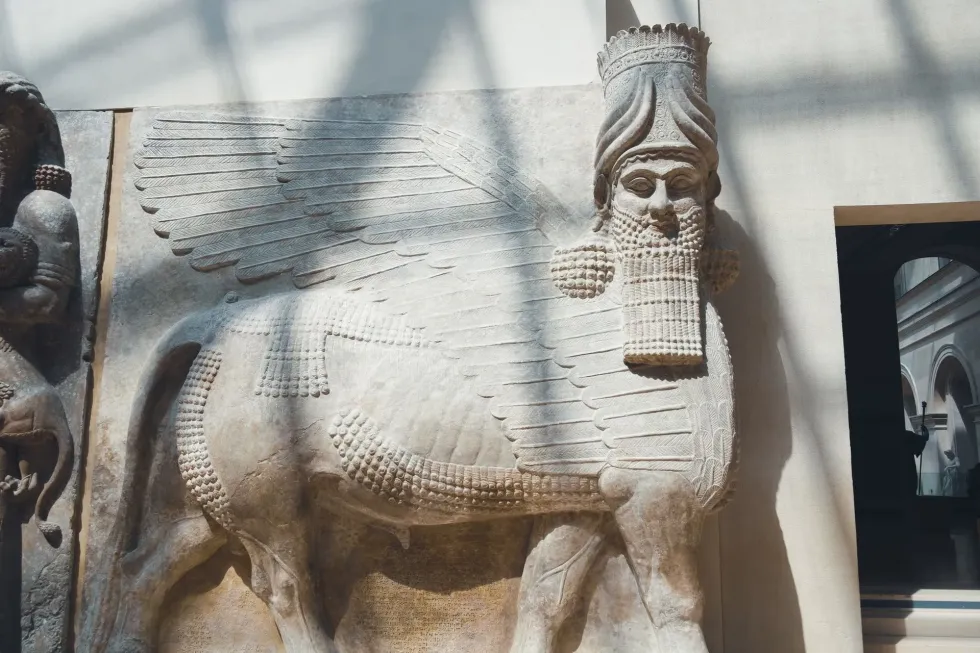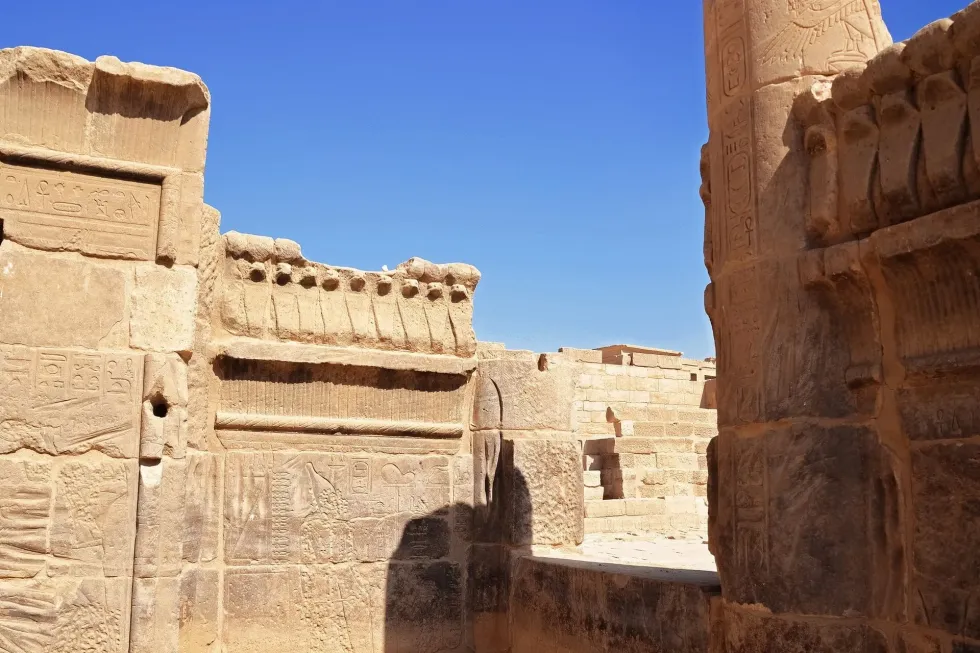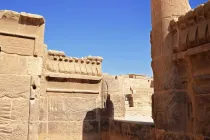21 Mesopotamia Government Facts: Learn All About Their Rulers

The Mesopotamian civilization was the oldest human civilization in recorded history.
They did not have a centralized government then but were divided into several smaller regions. The kings ruled over the city-states and were prone to internal fighting.
The first civilization of history, the Mesopotamian civilization, developed in West Asia between the banks of the Tigris and Euphrates rivers around modern-day Iran, Iraq, Kuwait, and Syria. Mesopotamia is a Greek term that literally means between rivers describing the civilization's location.
The word 'meso' means between, and 'potamos' means river. The land between the two rivers, Tigris and Euphrates, was a great place to start the civilization since the land was extremely fertile, and the rivers also helped in water transport.
Mesopotamians were polytheistic, meaning that they worshipped many gods. Ziggurat was the temple of the city-states dedicated to the chief God of the region.
It was a well-maintained society from which modern societies evolved, and therefore, it was known as a civilization. The crescent-shaped region of ancient Mesopotamia known as the Fertile Crescent in modern-day, consisting of Iraq, Lebanon, and Israel, was the cradle of civilization because of its cultural and technological advancements.
They invented writing, government, the plow, chariot, the wheel, sailboat, metallurgy, maps, and the list goes on. This exciting article will provide even more interesting facts about the ancient Mesopotamian people, their government, laws, and way of life.
If you are interested in more content, then keep on reading these fun facts articles on Iran Government Facts and Peru government facts too.
Monarchy: Mesopotamia Government
The king held the highest position in the Mesopotamian civilization; all powers were concentrated in his hands. The kings ruled the cities in the name of the gods they worshipped, and the commoners believed that the king had a god-given right to rule.
They believed that gods protected every individual in the city-state and therefore aimed to make the gods happy.
The Sumerians were the ones who found Mesopotamia, and around 2334 BC, Sargon of Akkad developed the world's first empire called the Akkadian empire in Mesopotamia. Later the Babylon empire and Assyrian empire were also formed in Mesopotamia.
The ruler of Babylon, King Hammurabi, developed the world's first law code called the Code of Hammurabi. It was used to regulate Mesopotamian society.
It was ruled by kings; each city-state had a single king who ruled that city rather than the entire civilization. Apart from farmers, potters, weavers, soldiers, and carpenters, traders also flourished in Mesopotamia.
They felt the need to trade with neighboring countries to acquire extra resources. The elite class of nobles formed the administration body who helped the kings run the government.
Unlike the centralized government of Egypt with a pharaoh, the Mesopotamians had a decentralized government with a king. Ancient Mesopotamia was ultimately conquered by Arabian Muslim invaders in the seventh century BC.
The Mesopotamian cities started as agro-based city-states. Being situated between the Tigris and the Euphrates rivers, farming was prosperous, and there was a food surplus.
The population in Ancient Mesopotamia slowly began to grow. Religious belief played a significant role in early Mesopotamia; they had four main gods and many local gods.
As gods became important, the priests who mediated between the divine and the commoners became important, and they ultimately took the role of governing. Soon, the priests felt the need for the assistance of secular leaders for intelligent leadership.
The civilization ran smoothly under such administration, and people started specializing and finding different jobs. The secular leader was called the 'lugal.'
With time, the lugal assumed the entire duty of running city-states while it made sense for the priests to be fully involved in gods. The lugal gradually became the secular king of the city-states who dominated the government and had some religious responsibilities.
The common people believed the kings and the queens to be the descendants of the city of gods even though they were never considered real gods. The kings made rules which the citizens were bound to obey.
Kings often gave special titles to themselves, depending on the role they performed. Some of them called themselves the Shepherd, while others referred to themselves as the great king of the Universe.
The king was followed by an assembly of wise men selected by the citizens. The assembly had the right to overrule the king. Each city-state had a single governor assigned the responsibility of making people pay taxes.
They also enforced the king's law in the city-states, sent soldiers to war, and assigned workers to construct the temple. The leaders led the people into war.
Social Factors: Mesopotamia Government
Ancient Mesopotamia introduced many firsts in the world. One of such first was the establishment of the first multi-national empire.
The civilization was divided into two main regions, the northern part and the southern part. These regions were further divided into smaller regions called city-states. Each city-state had a local government, and they varied from each other based on social factors.
The Mesopotamians discovered kinship for the first time. Kingly dynasties passed down the succession to the king's throne. As their culture developed, the city-states combined to form kingdoms. Geography played a significant role in advancing the government and politics in history.
The Sumerians were the first to build irrigation canals which separated them from other city-states. They were independent with protective independence. Other cities would often try to capture the land of other cities or unify two cities.
The Sumerian people were stronger in warfare than the others, so it was not easy to defeat them and capture their land. The Akkad's formed the first dynasty empire ever with several succession kings.
Babylon captured it after a few years and ruled for a while. The Mesopotamians were the ones who developed imperialism in the ancient world for the first time.
The second millennium was known as the first international age. It was the time when the interaction between the different kingdoms increased. The Assyrian culture embraced the smaller tribes made up of many ethnic groups.
Other than the king, several otherwise men also had an important position in the government body. One of the highest positions in the hierarchy was the scribe, who worked very close to the king and the bureaucracy.
The temples provided welfare services to orphans and widows. The elite kings were responsible for looking after the widows, orphans, and the underprivileged.
On failing to handle these duties, the king was deposed. The city-state was ruled by a 'lugal' in ancient Mesopotamia. He acted during times of crisis, and when the problems became much prolonged, they became the king.
A ruler with similar power often addressed other rulers with similar powers as brothers. However, those who had more power were addressed by the term father by the less powerful king.
Some women rulers also obtained positions of power in the Mesopotamian government. Women earned a higher status, particularly under the rule of Simat-Ishtaran, who came to the throne after her husband died. The clay tablets revealed that women supervised men, received equal salaries, and worked in construction sites.
The founder of the dynasty system of empires, the Mesopotamian king, believed that they were the mediators of gods. They also had total belief in gods and believed that gods would indicate before any upcoming disasters.
The common people, in turn, believed that the king was the representative of the city-state's patron god or the primary God.
The citizens understood law and order and obeyed them either out of respect for the king or fearing the consequences if one failed to follow. Even though it was the oldest civilization in the world, the structure of the government and hierarchy system was similar to that of the present-day governments.

Political Factors: Mesopotamia Government
The people of Mesopotamia had limited political power; they could not contribute to the government wholly. The limited share in the religious cult revolved around the well-being and general welfare of the king and his court.
Slavery was part of the Mesopotamian kingdoms for the entire course of the civilization, even though the slaves could buy their freedom from the masters or could be adopted by their masters too.
They also enjoyed several other privileges, such as owning property, conducting trade, and engaging in business. However, degrading the morale of humanity by dividing them based on class was unjust. The people believed in God, and therefore, religious institutions like temples held an immense amount of power and gave the priests an undue position in society.
Prestigious positions of the society were generally restricted to the family of the rulers and wise men. Occasionally, there were instances of people of humble birth rising into a powerful designation in society. Internal war and uprising were frequent in the civilization, particularly in Assyria and Babylon.
This caused severe disturbances and revealed the dissatisfaction of the common people in society. People were agitated by the enforced military service and the unnecessary taxes for the maintenance of armies, temples, and the royal court. The cruelty practiced by the people of power alienated the common population, and they gradually became more and more aloof from the government.
The Babylonian and the Sumerian laws were more or less similar since the Babylonian laws were derived from the Sumerians. Both cultures believed their king to be a mortal, just like every common person.
The main aim of these two civilizations was to treat everyone equally. Religion played a significant role in these traditional societies. The king was equally eager to keep the gods satisfied, just like the common people.
For this reason, an assembly of older men was formed to discuss the laws which would keep the gods happy. The king always sought the body of wise men for approval of specific laws, just like the rest of the population.
An unusual thing about the Babylonian and Sumerian governments was that the assembly could also order the gods.
They had authority in religious places such as temples and could decide on how to arrange the gods and which place would keep the gods happy. Following their instructions, the king passed the laws.
Global Stands By Mesopotamia Government
In both Sumer and Babylon of ancient Mesopotamia, the unusual forms of governments came very close to the early democratic governments. The nobles and the kings held the powers to make the law and declare war. They could also decide how to honor God as gods were an important part of society.
The king had an assembly of men who would help in making specialized decisions, and the people's majority selected this administrating body. The administrative body could challenge every decision of the ruler; they could discuss laws and a vote to stop entering into a war. Each city-state had a different government, but Assyria was governed quite differently.
Assyria was a powerful state of northern Mesopotamia. According to Assyrians, the ruler who led the Assyrian empire was considered to be a representative of the God Ashur, the most powerful God.
Military officers led the government, and there were other advisors who enforced the law. The most important advisers, the chief of the staff, decided the relationship of others with the king.
Only the scribes could read and write. One unique feature of the Assyrians is that in Assyria, the assembly could not overrule the king; the king's words were the law.
There is no record of the written form of the Sumerian laws, so it is believed that the Sumers did not write their laws. Once the law was passed, everyone was expected to follow it, failing which the Sumerians were punished.
The punishment varied depending on the level of the crime. The Sumerians were properly organized into city-states, and each city had a single noble family. If the law passed by the administration in one city-state were good, the other states would adopt the same law within some time.
Therefore, although the Sumerians were divided into smaller regions that were constantly fighting against each other, they were bound by almost similar types of laws and punishments, culture, religion, and lifestyle. People could also move from one city to the other.
Unlike the Sumerians, Babylonian law was available in written form. Babylon conquered the Sumerian empire as those city-states began to get weak. For quite a while, almost the entire south Mesopotamian was ruled by Babylon.
The norms of the government were more or less like the Sumers. This is because the laws of Babylon were majorly taken from the laws of Sumer.
An assembly of specialized nobles followed the king, enforcing the laws on the common population. To ensure that everyone was aware of the laws, one of the kings of Babylon, King Hammurabi, wrote down the laws on stone tablets. Under this system of law, each and everyone, including the rich and poor, were treated equally.
The Laws of Hammurabi are the most well-known laws of the Mesopotamian civilization, and they were well obeyed. These laws were made around 1780 BC and are preserved artifacts of Mesopotamian history. The code of laws had 282 laws.
Here at Kidadl, we have carefully created many interesting family-friendly facts for everyone to enjoy! If you liked our suggestions for Mesopotamia government facts, then why not take a look at France government facts or Norway government facts.
We Want Your Photos!
More for You
Bachelors in Business Administration

Aashita DhingraBachelors in Business Administration
Based in Lucknow, India, Aashita is a skilled content creator with experience crafting study guides for high school-aged kids. Her education includes a degree in Business Administration from St. Mary's Convent Inter College, which she leverages to bring a unique perspective to her work. Aashita's passion for writing and education is evident in her ability to craft engaging content.
Disclaimer
1) Kidadl is independent and to make our service free to you the reader we are supported by advertising. We hope you love our recommendations for products and services! What we suggest is selected independently by the Kidadl team. If you purchase using the Buy Now button we may earn a small commission. This does not influence our choices. Prices are correct and items are available at the time the article was published but we cannot guarantee that on the time of reading. Please note that Kidadl is a participant in the Amazon Services LLC Associates Program, an affiliate advertising program designed to provide a means for sites to earn advertising fees by advertising and linking to Amazon. We also link to other websites, but are not responsible for their content.
2) At Kidadl, we strive to recommend the very best activities and events. We will always aim to give you accurate information at the date of publication - however, information does change, so it’s important you do your own research, double-check and make the decision that is right for your family. We recognise that not all activities and ideas are appropriate for all children and families or in all circumstances. Our recommended activities are based on age but these are a guide. We recommend that these ideas are used as inspiration, that ideas are undertaken with appropriate adult supervision, and that each adult uses their own discretion and knowledge of their children to consider the safety and suitability. Kidadl cannot accept liability for the execution of these ideas, and parental supervision is advised at all times, as safety is paramount. Anyone using the information provided by Kidadl does so at their own risk and we can not accept liability if things go wrong.
3) Because we are an educational resource, we have quotes and facts about a range of historical and modern figures. We do not endorse the actions of or rhetoric of all the people included in these collections, but we think they are important for growing minds to learn about under the guidance of parents or guardians.







